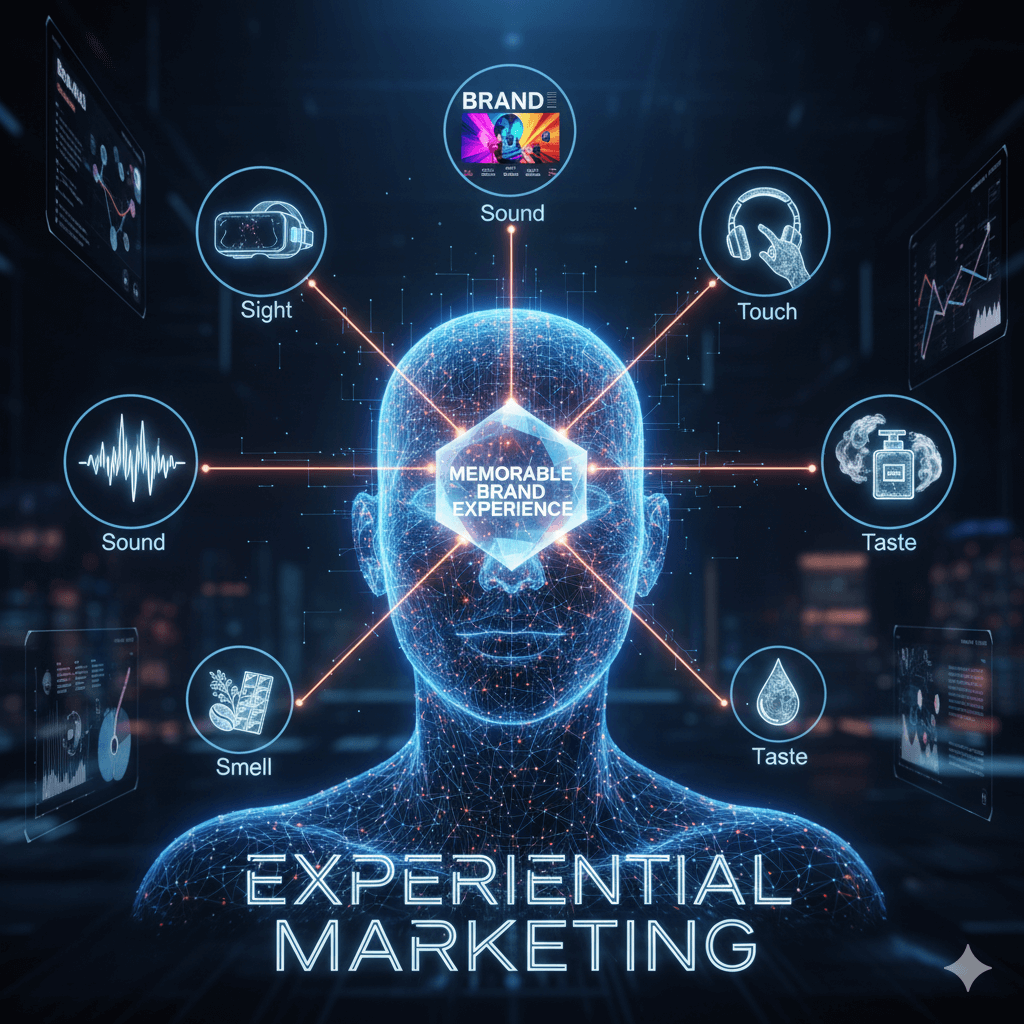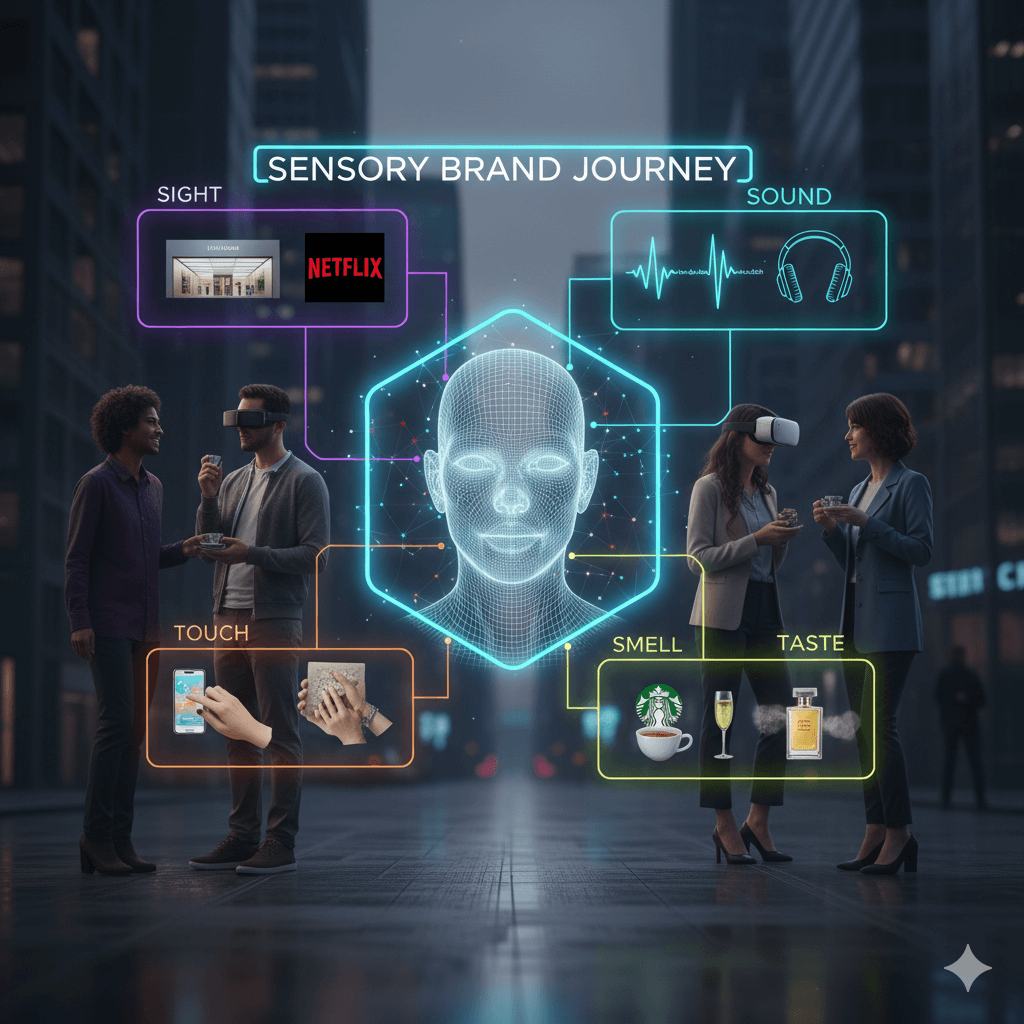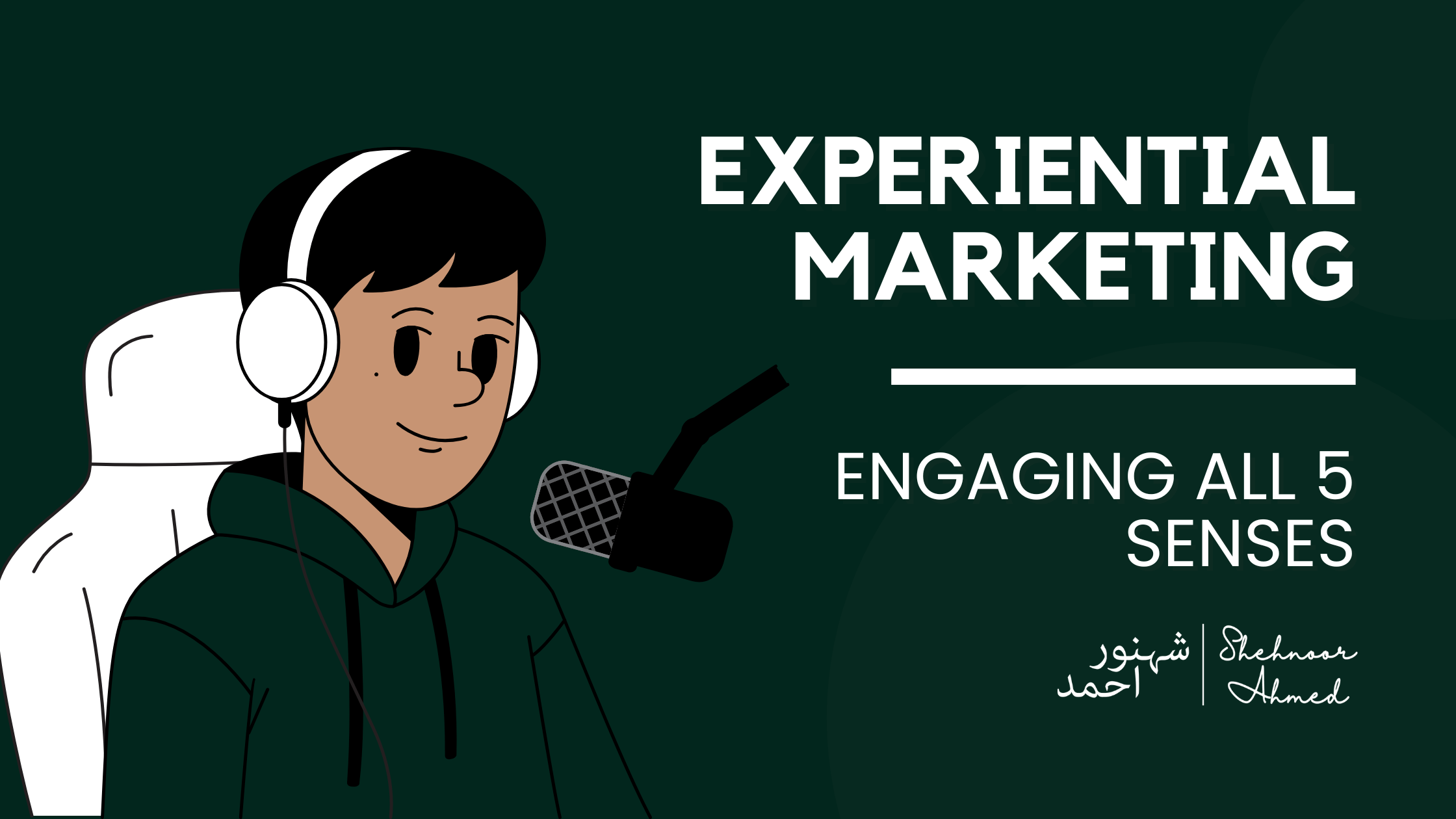We live in a world where ads are everywhere, on our phones, billboards, and even inside apps. Most of them get ignored. Why? Because people don’t just want to see ads; they want to experience brands in a way that feels real and memorable. That’s where experiential marketing comes in.
This tactic isn’t marketing a product, it’s provoking feelings. It uses vision, hearing, touch, odor, and taste to create permanent memories. Recall the last time you walked into a store and got a sniff of something amazing or heard something that instantly conjured up a brand. That’s the power of sensory marketing.
Why Experiential Marketing Works

Those retro ads talk to individuals. Experiential marketing draws individuals in and welcomes them into the narrative. Here’s why it works so well:
- Individuals desire to experience things in real life – We’re bombarded with advertisements every day, but we remember experiences that place us in the midst of something.
- It sticks in your memory – The more senses you engage, the better chance people have of remembering your brand.
- It encourages sharing – People love sharing cool experiences, which means free publicity for your brand.
When people can see, hear, touch, smell, or taste something related to a brand, they connect with it on a deeper level.
How Brands Use the 5 Senses

Sight: The First Impression Matters
Visuals are powerful. The mind reads pictures 60,000 times faster than text. It is why businesses spend on strong colors, exclusive designs, and compelling videos.
Consider Apple stores, their clean, minimalist aesthetic is immediately recognizable. Or the way that Netflix’s bold red mark stands out. These brands understand that what people see shapes how they feel.
How to use sight in marketing:
- Use vibrant, consistent branding
- Try VR (virtual reality) or AR (augmented reality) for immersive experiences
- Design spaces or ads that tell a story visually
Sound: Creating an Emotional Connection
Ever heard a song and instantly thought of a brand? That’s because sound plays with our emotions.
- McDonald’s “I’m Lovin’ It” jingle is instantly recognizable.
- Luxury hotels play soothing music to create a calm atmosphere.
- Car engines are tuned to sound powerful and appealing.
How to use sound in marketing:
- Add music or sound effects that match your brand’s personality
- Use voice-activated marketing (like Alexa or Siri)
- Create branded sounds or jingles to reinforce identity
Touch: The Power of Hands-On Experience
The more people can physically engage with a product, the better they understand it.
- Apple lets customers try out their devices before buying.
- Sephora has beauty stations where people can test products.
- Lush stores encourage touching their handmade soaps to feel the quality.
How to use touch in marketing:
- Let customers physically experience your product
- Use high-quality packaging with unique textures
- Create interactive in-store displays
Smell: The Secret Weapon of Branding
Smell is automatically connected to emotion and memory. It’s the reason why brands use signature scents to engender instant recall.
- Starbucks smells of freshly brewed coffee, even when you are only passing by-even if you aren’t going in to buy a thing, you will crave the smell of a latte.
- Resort hotels install personally scented products to promote feelings of relaxation and comfort.
- Nike shops pip in a light fragrance that gets the room to smell new and fresh.
How to use smell in marketing:
- Use scented branding in stores, offices, or product packaging
- Create a signature scent that reminds customers of your brand
- Offer free samples of scented products (candles, perfumes, etc.)
Taste: A Flavorful Connection
Even if your business isn’t in the food industry, taste can still play a role in your marketing.
- Spas offer herbal tea to create a relaxing experience.
- Luxury car dealerships serve champagne or coffee to elevate the buying experience.
- Retail stores sometimes offer chocolates or snacks to make shopping feel special.
How to use taste in marketing:
- If you have a physical location, offer free snacks or drinks
- If you sell food, focus on taste testing events
- Partner with food brands to add a surprise element to events
Brands That Are Doing It Right

Some companies have already mastered sensory marketing. Here are a few that stand out:
- Coca-Cola’s “Share a Coke” Campaign – Personalized Coke bottles made people feel connected to the brand.
- Sephora’s Interactive Beauty Stations – Customers touch, test, and experiment with makeup before buying.
- Lush’s In-Store Demos – Letting customers feel, smell, and see their products in action makes them more likely to buy.
- Starbucks’ Roastery Experience – Customers smell, see, and taste different coffee blends, making it a full sensory experience.
These brands prove that people don’t just buy products, they buy experiences.
How You Can Use Sensory Marketing
If you want to make your brand more memorable, start with these simple steps:
- Go beyond visuals – Think about how you can engage all five senses.
- Use technology – AR and VR can create interactive brand experiences.
- Encourage hands-on experiences – The more people interact with your brand, the more they’ll remember it.
- Make it feel natural – People hate forced marketing, so keep it authentic.
- Test and refine – See what works for your audience and tweak it accordingly.
Final Thoughts
Experiential marketing isn’t about pushing ads, it’s about creating moments that people remember. Whether through sight, sound, touch, smell, or taste, the best brands create real, emotional connections with their customers.
If you’re ready to level up your marketing game, Shehnoor Ahmed can help craft unforgettable brand experiences.

Want to make your brand stand out? Let’s create something amazing!
FAQs
Q: What is experiential marketing?
A: It’s a marketing strategy that lets people experience a brand in a hands-on way, instead of just seeing an ad.
Q: Why does engaging the five senses matter?
A: The more senses you engage, the more memorable and emotional the experience becomes.
Q: Can sensory marketing work for non-food brands?
A: Definitely! Any brand can use touch, smell, sound, and visuals to create engaging experiences.
Q: How can small businesses use sensory marketing?
A: Start small, offer interactive experiences, scented branding, or in-store demos to engage customers.
Q: How does technology help with sensory marketing?
A: AR, VR, and interactive experiences make marketing more immersive and engaging.




